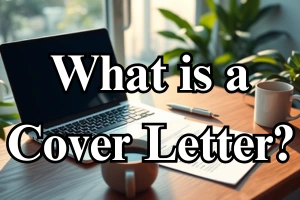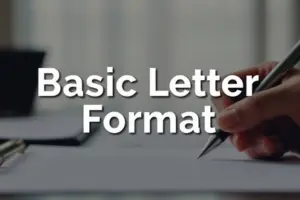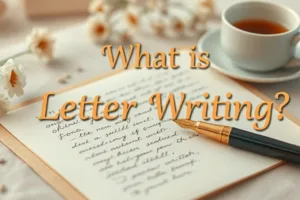15 Types of Cover Letters: Which One is Perfect for Your Job Application?
Published: 18 Jan 2025
Hey there!
Let’s talk about one of the biggest headaches when job hunting: writing the best cover letter. I know it feels like an extra task you don’t want to do, but trust me – the right cover letter can make all the difference between getting an interview and getting ignored. It’s like your first impression before you even meet the hiring manager.
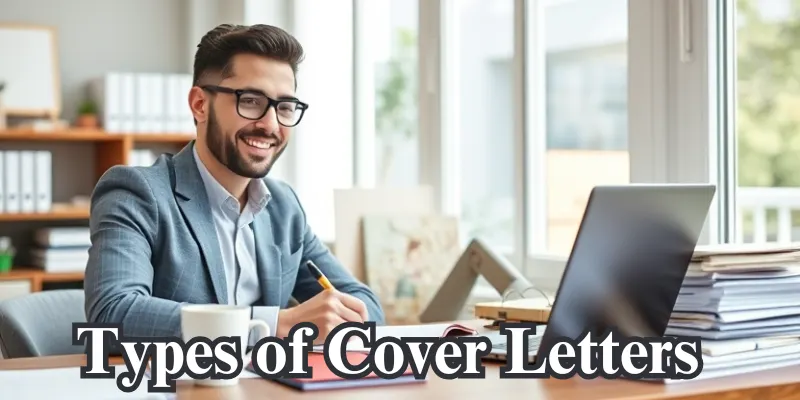
Now, here’s the thing – there’s no one-size-fits-all when it comes to cover letters. The truth is, there are many different types, and you need to know exactly which one to use for each situation. Maybe you’re applying for a job where you’re not even sure they’re hiring yet, or you’re looking to make a career shift, or maybe you’ve been with your current company forever, and you’re ready for that next promotion. The point is, that you have options.
In this guide, I’m going to walk you through different types of cover letters and show you exactly when and how to use each one. No more guessing, no more confusion. By the end of this article, you’ll have all the tools you need to write a cover letter that’s tailored to your needs, whether you’re a fresh graduate, looking for a career change, or applying for an internal promotion.
Are you ready to crush your job applications? Let’s dive in!
Why Choosing the Right Type of Cover Letter Matters
Alright, let’s have a little heart-to-heart. Why should you even bother with different types of cover letters? Can’t you just whip up one generic letter and call it a day? Well, here’s the deal: not all jobs are the same, and neither are cover letters! Think of it like this: if you’re going to a beach party, you wouldn’t show up in a tuxedo, right? The same logic applies here.

The type of cover letter you use can make or break your application. Why? Because the right letter shows you get it. You’re speaking directly to the company’s needs and showing them exactly why you’re the perfect fit. But how do you know why it matters? Let me break it down for you:
- It Shows You’ve Done Your Homework: A tailored cover letter says, “Hey, I know who you are, and I’m excited to be part of your team.” It’s way more impactful than a generic one.
- It Matches the Job’s Vibe: Applying for a Creative Role? Your cover letter should show off some personality. Going for a corporate job? Keep it professional and sharp. The tone matters just as much as the content.
- It Highlights What’s Relevant: Each job has specific requirements. Choosing the right type of cover letter lets you emphasize the skills and experience that fit the role perfectly.
- It Grabs Attention: When a hiring manager sees a well-thought-out cover letter, it stands out from the pile of generic ones. It’s like having a neon sign that says, “Pick me!”
So yeah, choosing the right type of cover letter isn’t just important – it’s the key to making your application unforgettable. The best part? You’ve got options for every situation! Ready to find out which type is perfect for your next job application? Let’s dive into the Types of Cover Letters and get you one step closer to landing that dream role!
1. The Classic Standard Cover Letter
Okay, let’s start with the basics – the standard cover letter. This one is the go-to, the “tried and true” format. If you’re applying for a job that has clear requirements listed, this is the type you’ll want to use.
What’s the Deal?
It’s pretty straightforward. You introduce yourself, explain why you’re excited about the job, and give a brief overview of your skills. Simple, right?
When to Use It?
Use this when you’re applying for a job that’s publicly listed. It’s like your first date with the company – keep it professional, show you’ve done your research, and let them know why you are the perfect fit.

2. The Tailored Cover Letter (Get Personal)
Now, if you want to up your game a little, you’ll want to go with a tailored cover letter. This one is like a tailored suit – it’s custom-fit to the job and company you’re applying for.
What’s the Deal?
In a tailored cover letter, you show how your specific skills match what the company is looking for. You’re not just sending the same generic letter to everyone – you’re making sure your unique experience is front and centre.
When to Use It?
Use this when the job listing is detailed. If the company gives you a laundry list of qualifications, this is where you match each skill with your experience. It’s like giving them exactly what they want to see.
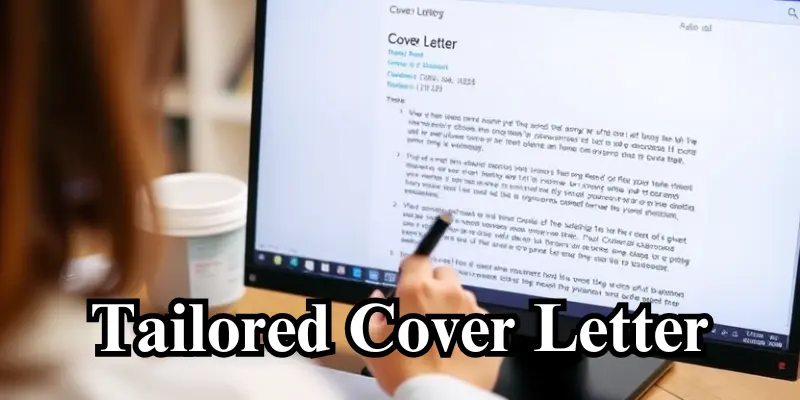
3. The Job Promotion Cover Letter (Internal Growth)
Ah, moving up the ladder. Congrats if you’re thinking about applying for an internal promotion! But wait – you still need a cover letter, right? Yup! And it’s going to be a little different from the standard one.
What’s the Deal?
A job promotion cover letter is all about showcasing your achievements within the company and explaining why you’re the right person for this next step.
When to Use It?
This is perfect when you want to level up at your current company. You’re already in the door, now it’s time to prove why you deserve the next role. Talk about the great stuff you’ve done and show you’re ready for the next challenge.

4. The Referral Cover Letter (Name Drop, But in a Good Way)
A referral cover letter is where you get to drop a little name – but in the best possible way. If someone at the company has recommended you, this is your chance to shine with that connection.
What’s the Deal?
In a referral cover letter, you mention the person who referred you (with their permission, of course) and explain why they believe you’re a perfect fit. It’s like having a personal endorsement right at the start.
When to Use It?
Use this when someone within the company has already vouched for you. It gives you that extra boost and shows you’ve got inside support.
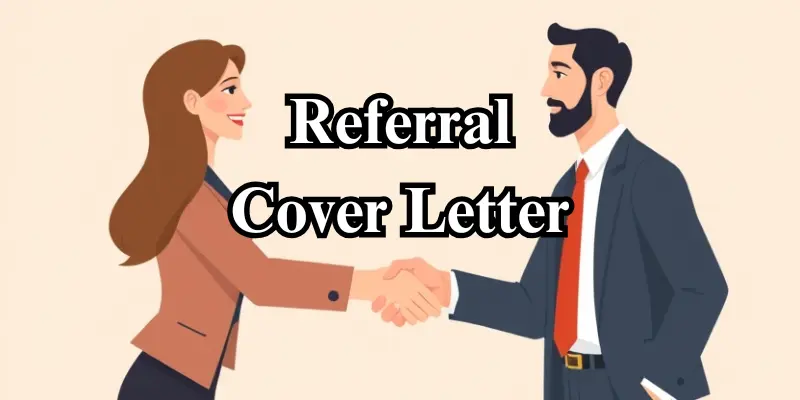
5. The Email Cover Letter (Short and Sweet)
Now, let’s talk about email cover letters. Sometimes, you don’t need to write a full, formal letter. You just need to send a quick email with your cover letter in the body.
What’s the Deal?
This one’s short and sweet. It’s still professional, but you don’t need to go into as much detail as you would in a traditional cover letter. Think of it like texting a friend – but professional.
When to Use It?
If you’re applying via email, this is your go-to. Keep it brief but to the point. Just make sure to attach your resume and be polite!
6. The Speculative or Unsolicited Cover Letter
Alright, here’s a fun one: the speculative cover letter. This is when you’re not applying for a specific job but still want to reach out to a company you’re really interested in. You’re just putting yourself out there and asking if they’re hiring.
What’s the Deal?
You’re writing a cover letter even when there’s no job opening. But the key here is to show the company why you’d be an amazing addition to their team, even if they don’t know they need you yet!
When to Use It?
Use this when you really like a company but they’re not actively hiring. You’ve done your homework on them, and you believe you could contribute. Take a shot – you never know what might happen!

7. The Creative Cover Letter (Show Your Personality)
If you’re applying for a creative role, this is where you get to show off a little! A creative cover letter lets your personality shine through.
What’s the Deal?
This isn’t just about your qualifications; it’s about showcasing your creativity. Whether it’s design, marketing, or advertising, you can use this cover letter to prove you’ve got the right skills and the creativity to match.
When to Use It?
Use this if you’re applying for a role in a creative field. Just make sure it’s professional and still conveys the right tone – we want them to know you’re creative, but also serious about the job.
8. The Response Cover Letter
You know when you see a job post and you just know it’s perfect for you? That’s when you whip out the response cover letter. This one’s your chance to show exactly why you’re the perfect match for what they’re looking for.
What’s the Deal?
In this letter, you directly respond to the job description. You pull out the key qualifications and match them to your experience. It’s almost like a mini resume with some personality.
When to Use It?
Use this when you’re replying to a specific job listing. They’ve asked for certain skills. You’re ready to show them you’ve got them.
9. The Rejection Cover Letter (After an Interview)
Did you get rejected from a job you really wanted? Don’t give up just yet! A rejection cover letter is your way of keeping the door open for future opportunities.
What’s the Deal?
This letter is about keeping things positive and professional. You thank them for considering you, express your interest in future roles, and show that you’re still keen on working with them.
When to Use It?
Use it after a job rejection, especially if you want to leave a lasting good impression. They might remember you when a new role opens up!
10. The Thank You Cover Letter (Appreciation Goes a Long Way)
A thank you cover letter is a thoughtful follow-up after an interview. It’s a great way to show your gratitude and remind the employer why you’re the one.
What’s the Deal?
This cover letter is all about expressing appreciation for the opportunity and reiterating your enthusiasm for the role. It’s not just about saying “thank you” – you also take a moment to highlight why you’re a perfect fit.
When to Use It?
Use this after an interview to leave a positive, lasting impression. You’ll set yourself apart from other candidates with this small but impactful gesture.
11. The Graduate Cover Letter (Entry-Level Jobs)
Fresh out of college and looking for that first real job? A graduate cover letter is your ticket to landing that entry-level position.
What’s the Deal?
You don’t have years of experience? No problem! This cover letter is about showing your enthusiasm, academic achievements, and any internships or projects that make you the right candidate for the job.
When to Use It?
Use this when applying for entry-level roles right after graduation. This is your chance to show the company why you’re ready to jump into the workforce.
12. The Part-Time Cover Letter (Need a Flex Job?)
A part-time cover letter is perfect if you’re looking for flexible hours. Whether it’s for a second job or just something to fit around your main gig, this letter will help you stand out.
What’s the Deal?
You’ll focus on your availability, interest in part-time roles, and any relevant experience you have. Make it clear why part-time work is a great fit for you.
When to Use It?
Use this when applying for part-time or flexible positions. Let them know you can handle the job on a part-time basis and are eager to contribute.
13. The Internship Cover Letter
Landing an internship is often the first step toward a career. Your internship cover letter will highlight your academic background and desire to gain hands-on experience.
What’s the Deal?
This letter is all about showing why you’re interested in the internship and how your skills and education make you a great candidate. It’s less about experience, more about your potential.
When to Use It?
Use this when applying for internships. Even if you don’t have tons of experience, show your enthusiasm to learn and grow.
14. The Career Change Cover Letter (New Direction)
Looking to make a big career shift? A career change cover letter helps explain your transition and how your previous experience relates to the new field.
What’s the Deal?
In this letter, you’ll explain why you’re switching careers and how your skills can transfer. You’re essentially connecting the dots between your old job and the one you want.
When to Use It?
Use this when switching careers. It’s perfect for when you’re moving into a totally different field but still have skills that align.
15. The Video Cover Letter
The video cover letter is a modern twist on the traditional approach. It lets you speak directly to the hiring manager and showcase your personality beyond the paper.
What’s the Deal?
Instead of typing your letter, you record a short video (usually 1-2 minutes) explaining why you’re the best fit for the job. It’s like an elevator pitch with a personal touch.
When to Use It?
Use this when applying to jobs where creativity or communication is key. If you’re confident on camera, this can really help you stand out from the crowd.
Best Practices for Writing Any Type of Cover Letter
Okay, so you’ve got the type of cover letter nailed down, but now it’s time to make sure you’re writing it the right way. No matter what type of letter you’re going for, there are some key tricks to make sure you’re getting the attention you deserve. Here are a few best practices that’ll help you make an impression, whether you’re sending a standard cover letter or one with a creative twist.
| TIps: |
|---|
|
Common Types of Cover Letter Mistakes to Avoid
Now that you know the best practices, let’s talk about the big don’ts. We all know that the devil is in the details, and a small mistake can be the difference between getting noticed or getting ignored. So, here are some common cover letter mistakes you definitely want to avoid at all costs:
| Tips: |
|---|
|
FAQs About Types of Cover Letters
Do you have some questions about the different types of cover letters? No problem – I’ve got you covered! Here are answers to some of the most common questions to help you nail the perfect type of cover letter for your situation.
It depends on the situation. For example:
- If you’re applying to a listed job, go for a Standard Cover Letter or a Tailored Cover Letter.
- If you’re reaching out to a company that isn’t actively hiring, use a Speculative Cover Letter.
- Applying for an internal position? A Job Promotion Cover Letter is your go-to.
Match the letter type to the job situation to make the best impression.
Absolutely! Sometimes, combining elements from multiple types works best. For instance, you can create a Tailored Cover Letter that also mentions a referral. Or, if you’re switching careers, you might combine a Career Change Cover Letter with a bit of creativity to stand out. Just make sure the tone and structure are clear.
The level of customization.
- A Standard Cover Letter introduces you and provides an overview of your skills, perfect for general job applications.
- A Tailored Cover Letter goes deeper, aligning your experience and skills directly with the job’s requirements. It shows you’ve done your research and are genuinely interested in the role.
For jobs in creative industries. If you’re applying for roles in design, marketing, media, or similar fields, a Creative Cover Letter lets you showcase your personality and creativity. However, keep it professional and ensure the creativity aligns with the company’s tone.
Yes, it’s simpler and shorter. An Email Cover Letter is written directly in the body of your email and focuses on key points about your qualifications. It’s perfect for quick submissions but still needs to be professional and error-free.
To show your readiness for the next step. A Job Promotion Cover Letter is used when applying for an internal position. It highlights your achievements within the company and explains why you’re ready to take on more responsibility. It’s your chance to demonstrate loyalty and growth.
To create opportunities where none exist. A Speculative Cover Letter is great if you want to work for a company that doesn’t have any open positions. It shows initiative and enthusiasm, which can make a lasting impression even if there isn’t an immediate job opening.
No, it’s only for when you have a referral. A Referral Cover Letter is meant to leverage your connection with someone in the company. If you don’t have a referral, stick with a Tailored Cover Letter and emphasize your skills and enthusiasm instead.
Yes, if you’re switching fields. A Career Change Cover Letter explains why you’re transitioning into a new industry and how your existing skills are transferable. It’s crucial for bridging the gap between your past experience and the new role.
Not always, but it can help. A Video Cover Letter is often enough to make an impression, especially for creative roles. However, if the job posting requests a traditional cover letter too, make sure to include it. Use the video to complement your written content, not replace it.
Conclusion
Alright, you’ve made it to the end of this guide, and now you’re ready to tackle your next cover letter like a pro! By now, you’ve learned that crafting the perfect cover letter isn’t just about writing a few paragraphs – it’s about choosing the right type of letter for your situation and making it stand out.
To wrap it all up, here are some key takeaways to keep in mind:
- Tailor Every Letter: Don’t rely on one generic template. Match your letter to the role and company to show you’ve done your homework.
- Keep it Concise: A strong cover letter is short, focused, and highlights your best qualities without going off on tangents.
- Make a Personal Connection: Address the hiring manager by name and show your genuine interest in the company.
- Be Professional, Yet Unique: Show some personality while keeping a formal tone that aligns with the job’s vibe.
- Proofread, Always: Even the smallest typo can make a big difference. Double-check everything before hitting send.
Remember, your cover letter is your chance to shine before the interview. With the tips and types we’ve covered, you’re set to create something that will grab attention and open doors.
If you found this guide helpful, don’t keep it to yourself – share it with someone who could use a little cover letter inspiration! And if you’re looking for more tips, tricks, and examples for every type of cover letter, be sure to explore this website for everything you need to make your application stand out.
We’d love to hear from you – leave a comment below and share your thoughts or questions about writing the perfect cover letter. Let’s keep the conversation going!
Good luck, and go land that dream job!

- Be Respectful
- Stay Relevant
- Stay Positive
- True Feedback
- Encourage Discussion
- Avoid Spamming
- No Fake News
- Don't Copy-Paste
- No Personal Attacks

- Be Respectful
- Stay Relevant
- Stay Positive
- True Feedback
- Encourage Discussion
- Avoid Spamming
- No Fake News
- Don't Copy-Paste
- No Personal Attacks
